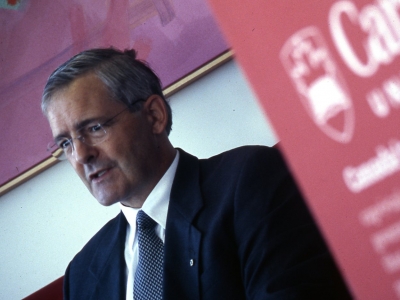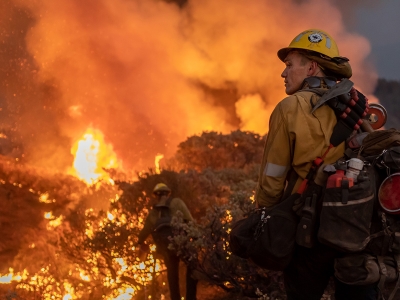Carleton University Physics Prof. Mark Boulay, Canada Research Chair in Particle Astrophysics and Subatomic Physics, and his team of 80 Canadian and international researchers have released the results of their first year collecting data on dark matter, confirming that the sensitive detector is working as anticipated.
The DEAP-3600 detector, operating at the underground SNOLAB in Sudbury, Ont., since late 2016 is searching for particles of mysterious dark matter that permeate the universe. This $30-million project is the largest dark matter detector of its kind in the world, employing a novel technique of using only scintillation light in liquid argon — light generated when a particle interacts with an argon nucleus.
“I am very pleased with the year one results from the DEAP-3600 experiment, which demonstrate a new technique using liquid argon for a dark matter particle search,” said Boulay. “This program will extend our sensitivity to dark matter, with the exciting potential of observing this dominant component of our universe for the first time.”
DEAP-3600 researchers, including teams from the University of Alberta, Canadian Nuclear Laboratories, Carleton, Queen’s, Laurentian University, SNOLAB and TRIUMF, along with international partners, have published the analysis of data collected during the first year. While they have not seen any potential dark matter particle interactions, the research projects allows the team to understand the limits on how dark matter particles interact with argon nuclei.
To get the necessary level of sensitivity, the detector needs to be operated deep underground at SNOLAB to filter out background cosmic rays from the atmosphere and strictly control levels of radioactivity, both of which could lead to false signals. With DEAP-3600, Boulay and his team have demonstrated some of the lowest levels of radioactivity ever achieved in dark matter searches, and they expect to further improve sensitivity by continuing to collect data.
“Physics is one of our core research strengths,” says Rafik Goubran, vice-president (Research and International). “Our physics researchers are making pioneering contributions to the field and leading international teams to new discoveries.”
With continued operation of the detector, the sensitivity for dark matter will be improved and may enable the discovery of particles that account for most of the matter in our universe, but so far have remained invisible. DEAP-3600 will continue to collect data at SNOLAB until 2020, when its ultimate sensitivity is reached.
“The fact that we’ve demonstrated that we can search for dark matter particles with the level of sensitivity demonstrated in this paper allows us to plan for future, larger and more sensitive experiments,” said Boulay. “We’re currently working towards a scale-up that will use about 300 tonnes of argon and improve the sensitivity by a factor of 100.”
A paper detailing the initial results of the project can be found online.
This research has been funded by the Canada Foundation for Innovation, the Natural Sciences and Engineering Research Council of Canada, the Ontario Research Fund and the Alberta Science and Investments Research Program with support from Compute Canada, SNOLAB and the McDonald Institute.
About SNOLAB and DEAP-3600
SNOLAB is an underground science laboratory specializing in underground science. Located 2 km below the surface in the Vale Creighton Mine located near Sudbury Ontario Canada, SNOLAB is an expansion of the existing facilities constructed for the Sudbury Neutrino Observatory (SNO) solar neutrino experiment. The facility is operated by the SNOLAB Institute whose member institutions are Carleton University, Laurentian University, Queen’s University, University of Alberta and Université de Montréal.
Starting in 2016, the DEAP-3600 experiment (SNOLAB, Sudbury) led by Boulay began searching for particles of mysterious dark matter that pervades the universe, enhancing the sensitivity for this kind of measurement, enabling a possible discovery, which for the first time would let researchers see the 80 per cent of matter in the universe that so far has remained invisible. Boulay’s research will also make use of a novel detector facility developed at Carleton to pursue the development of next-generation experiments, allowing leading-edge materials and detector characterization, and development of ultra-low background techniques.
Boulay and his colleagues released the results of their first dark matter search in late July 2017. The initial result demonstrated the best-ever rejection of radioactive backgrounds using the new technique, and also the lowest level ever achieved of background radon, one of the most troublesome backgrounds in dark matter searches.
Media Contact
Steven Reid
Media Relations Officer
Carleton University
613-520-2600, ext. 8718
613-265-6613
Steven_Reid3@Carleton.ca
Carleton Newsroom: https://newsroom.carleton.ca/
Follow us on Twitter: www.twitter.com/Cunewsroom
Need an expert? Go to: www.carleton.ca/newsroom/experts
Friday, February 22, 2019 in News Releases
Share: Twitter, Facebook



